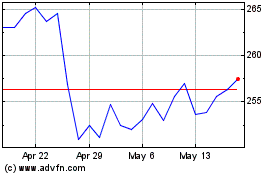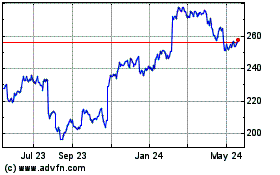US employers prioritize wellbeing but miss the mark with employees
October 31 2024 - 11:42AM

While employers are taking steps to support employees’ physical and
mental wellbeing, there is a disparity between the focus of
employer wellbeing programs and what employees need the most. This
is according to the latest Wellbeing Diagnostic Survey by WTW
(NASDAQ: WTW), a leading global advisory, broking and solutions
company.
The survey found U.S. employers are prioritizing support for
mental (73%) and physical (50%) wellbeing. Yet, employees say that
financial wellbeing support is their top area of concern (66%),
despite being the lowest priority for employers (23%).
Almost half of U.S. employees (48%) are struggling with moderate
or major issues in at least two areas of their wellbeing, according
to WTW’s 2024 Global Benefits Attitudes Survey (GBAS). Employees
with wellbeing issues show lower productivity (higher absence and
presenteeism) and report higher rates of burnout and lower levels
of engagement. Over half of employees (56%) have above-average
levels of stress, while 37% have reported symptoms of anxiety or
depression.
“The mental health crisis has brought employee wellbeing to the
forefront of employers’ minds in recent years,” said Regina Ihrke,
Health, Equity and Wellbeing leader, North America, WTW. “Companies
have been leaning heavily into physical and mental wellbeing to
make it a core part of their human capital strategy. We know that
these investments have improved employees’ perceptions of the
growing initiatives.”
“Organizations that are highly effective at employee wellbeing
often report better business outcomes, such as enhanced financial
performance and reduced employee turnover. However, there is a
disconnect between the wellbeing areas that employers are investing
in and what employees are saying they need help with,” said
Ihrke.
Indeed, employers are showing to be least effective in the areas
where employees need the most help, identifying financial wellbeing
initiatives at the very bottom (19%). Only two in five employees
(41%), however, feel financially secure and identify that their
financial situation is the area of their wellbeing where they face
the biggest challenges, according to GBAS.
Employees report mixed feelings about employer initiatives with
a net promoter score (a measure of customer loyalty and
satisfaction with a company) of –20; however, employers have made
significant progress since 2019 when the net promoter score was
–45. Companies are committed to seeking additional improvement over
the next three years, with 46% striving to embed wellbeing programs
and practices into their company culture and effectively
communicating its value to employees throughout the year, compared
with 33% today.
Moreover, more than four in five (91%) are prioritizing the
employee experience as an outcome of their wellbeing strategy, and
37% are looking to make wellbeing a foundational element of their
human capital strategy in the next three years, compared with only
11% today. Specifically, many employers (71%) are planning to boost
communication about their wellbeing programs and connect wellbeing
to company culture (49%) to raise the bar on employee health and
wellbeing.
“The delivery of wellbeing initiatives is just as important as
the content of the programs. Communication, accessibility and
creating a connected culture that links back to company and
employee values is key to building a stronger employee experience
when it comes to wellbeing. It’s important that employers focus on
getting the right priorities in place to support the varied needs
of their workforce as well as creating an enabling environment that
promotes the services they make available,” said Jill Havely,
managing director, Employee Experience, WTW.
About the study
The 2024 Wellbeing Diagnostic Survey was conducted from March to
April 2024. Respondents include 535 U.S. employees working at
medium and large private sector employers, representing a broad
range of industries.
The 2024 Global Benefits Attitudes Survey was conducted from
January to March 2024. Respondents include 10,000 U.S. employees
working at medium and large private sector employers, representing
a broad range of industries.
About WTW
At WTW (NASDAQ: WTW), we provide data-driven, insight-led
solutions in the areas of people, risk and capital. Leveraging the
global view and local expertise of our colleagues serving 140
countries and markets, we help organizations sharpen their
strategy, enhance organizational resilience, motivate their
workforce and maximize performance.
Working shoulder to shoulder with our clients, we uncover
opportunities for sustainable success—and provide perspective that
moves you. Learn more at wtwco.com.
Media contacts:
Stacy Bronsteinstacy.bronstein@wtwco.com
Ileana Feoliileana.feoli@wtwco.com
Willis Towers Watson Pub... (NASDAQ:WTW)
Historical Stock Chart
From Oct 2024 to Nov 2024

Willis Towers Watson Pub... (NASDAQ:WTW)
Historical Stock Chart
From Nov 2023 to Nov 2024
